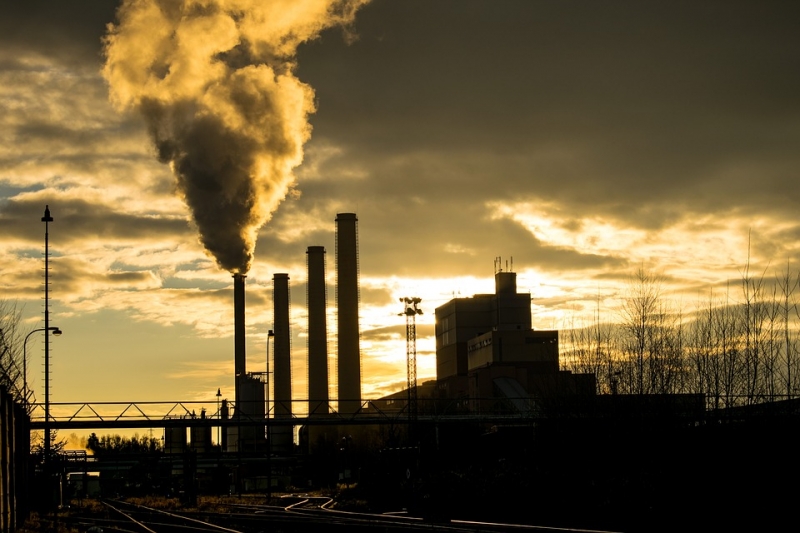Throughout the month of July, ELI is taking a closer look at “Environmental Justice & Vulnerable Communities” as we continue to offer special events, programs, and publications in commemoration of our 50th Anniversary. As part of this month-long introspection into our work in environmental justice, Research Associate Lovinia Reynolds and Research and Publications Intern Anthony D’Souza reached out to Barry E. Hill, ELI Visiting Scholar and Adjunct Law Professor at Vermont Law School. Prior to coming to ELI, Professor Hill was the Senior Counsel for Environmental Governance at EPA’s Office of International and Tribal Affairs. From 1998 to 2007, he was Director of EPA’s Office of Environmental Justice. Below are Professor Hill’s thoughts and perspectives, as an environmental justice advocate, on environmental justice in the United States.
1. What is the essence of the environmental injustice issue?
Advocates for environmental justice argue that who you are and where you live should not dictate how you live on a daily basis, and how you will die. There is a direct correlation between the adverse effects on human health and the environment of siting decisions and the enforcement of protective environmental laws, and the race and/or income of the residents of communities. That is the essence of the environmental injustice issue.
 2. What are some of the most challenging environmental injustice issues currently facing communities?
2. What are some of the most challenging environmental injustice issues currently facing communities?
Communities are currently facing, among other things: the siting and operation of landfills; toxic waste dumps; waste incinerators; industrial “cancer alleys”; and uranium enrichment facilities. These multiple sources of pollution have caused cumulative risks and impacts due to the disproportionate exposure from the aggregation of environmental harms and human health risks. As a result, communities have also complained about air pollution, odors, water access and water quality, truck traffic, and quality of life issues.
3. How should environmental organizations work more effectively with community-based organizations to address these environmental injustice issues?
Environmental organizations should collaborate more effectively with groups outside of their network, including ethnic minority as well as low-income institutions and community-based groups, because of their common interests: making industry responsible to local communities; concern for the health and safety of community residents; and sustainable economic development for all.
4. Why is community empowerment an important issue to you as an environmental justice advocate?
The environmental justice movement combines the environmental movement and the civil rights movement. One of the lessons learned from the civil rights movement was the importance of community empowerment. Community empowerment ensures that a community will not allow industry or government decisionmakers to make decisions that could adversely affect it unless residents are meaningfully involved in the decisionmaking processes.
5. Why is community empowerment lawyering an important issue to you as an environmental justice advocate?
According to Prof. William Quigley, the purpose of empowerment lawyering with community organizations is to enable a group of people to gain control of the forces that affect their lives. This type of lawyering differs markedly from corporate lawyering or criminal defense lawyering in purpose, substance, and style. It also differs from traditional public interest lawyering since the primary goal is building up the community. As so aptly stated by an environmental justice activist: “Lawyers should be on tap; not on top.” Community empowerment lawyering adheres strictly to that universal principle.
6. What gives you hope regarding addressing the issue of environmental injustice?
What gives me hope is the notion of an individual citizen’s self-executing private right to a clean, safe, and healthy environment being placed in state constitutions. In other words, I firmly believe in “environmental constitutionalism,” which basically means that a constitutional provision (commonly referred to as a “green amendment”) should be placed in the bill of rights sections of our 50 state constitutions so that citizens across this nation can defend their human right to clean water, clean air, and clean land. These green amendments currently exist in the state constitutions of Hawaii, Illinois, Massachusetts, Montana, New York, Pennsylvania, and Rhode Island. Experience has shown that a state cannot deny its citizens their right to clean air, clean land, and clean water.
In addition to existing environmental laws and their implementing regulations, environmental constitutionalism should be seriously considered as a viable mechanism to address environmental and human health challenges. Those challenges include environmental injustice, pollution, deforestation, biodiversity loss, ocean dead zones, melting polar icecaps, rising sea levels, explosive population growth, lack of access to safe and clean drinking water and sanitation, and climate change.
Interested in learning more? On July 30, ELI’s annual Summer School Series will hold a session on opportunities and obstacles within the realm of environmental justice. Faculty will explore NGO advocacy efforts, including community-led public health initiatives and community-based climate resilience programs; inclusion of communities in the decisionmaking process; federal, state, tribal, and local government addressing environmental justice; and methods for including multiple stakeholders in environmental justice conversations and processes.
And for& those looking for a comprehensive review of the complex mixture of environmental laws and civil rights legal theories that are central to this still-evolving area of law, be sure to check out Professor Hill’s Environmental Justice: Legal Theory and Practice. Now in its 4th edition, the book includes all of the significant cases and developments that have occurred since the prior edition. Readers will come away with a deep understanding of the dynamics of environmental justice and gain insight as to how best to address the issue through enlightened leadership in our communities, government agencies, state bar associations, law offices and legal services providers, law school clinics and academic institutions, and corporations.

